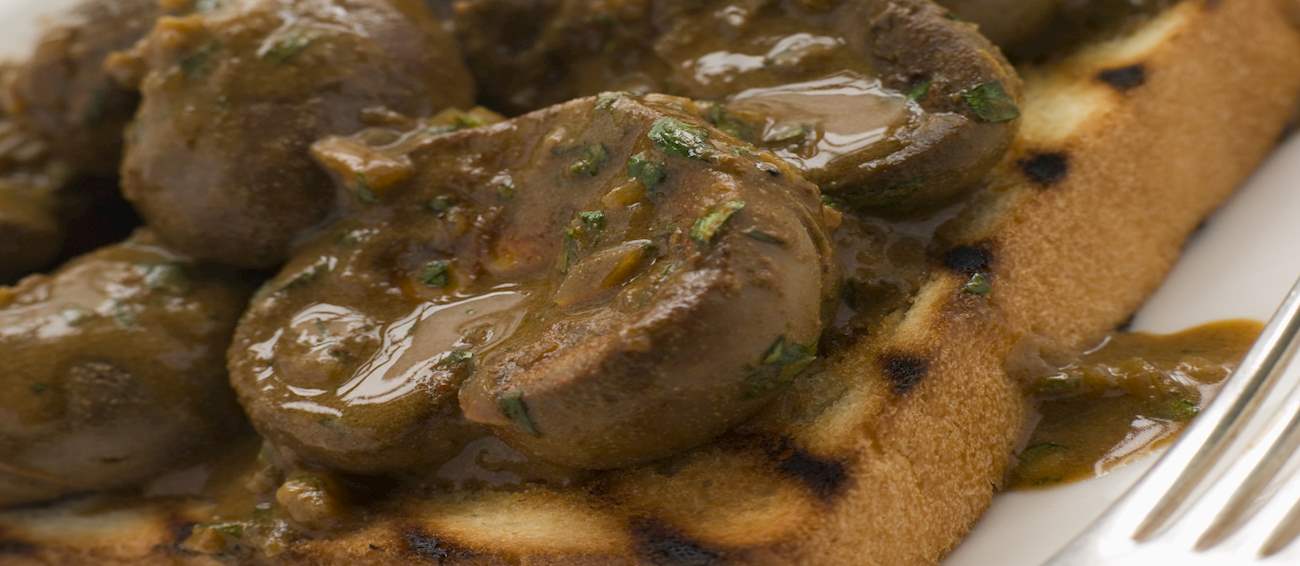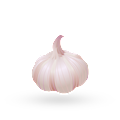MAIN INGREDIENTS
Aginares salata is a traditional salad originating from Crete. Although there are variations, the salad is usually made with a combination of young and tender artichokes, lemon, lemon juice, olive oil, mustard, garlic, dill, salt, and pepper. The artichokes are trimmed and boiled in a mixture of water and lemon juice.
The artichokes are quartered and cut in half, rubbed with lemon, and placed on a platter. A dressing consisting of lemon juice, olive oil, mustard, and garlic is then poured over the artichokes, and the salad is sprinkled with chopped dill, seasoned with salt and pepper, tossed, and served immediately.
What was once a popular Victorian breakfast is nowadays a light lunch or a flavorful appetizer: the dish is called devilled kidneys, made by frying lamb kidneys in a rich, spicy sauce made with vinegar, mustard, Worcestershire sauce, a pinch of cayenne pepper, and sometimes a bit of fruit jelly.
It is usually garnished with freshly chopped parsley and served with fried white or sourdough bread. The dish first appeared during the 18th century, but it grew in popularity during the 19th and the 20th century.
MOST ICONIC Devilled kidneys
View moreOften referred to as nervetti in insalata, this classic northern Italian dish consists of meat, cartilage, and tendons from beef shank that are cooked on the bone. When tender, all of the elements are removed from the bones and left to set, allowing the gelatinous properties to create a firm, jelly-like treat.
Though it is often prepared plain, various ingredients such as olives, onions, or peppers are occasionally added to the mixture. Nervetti is always served well-chilled, thinly sliced, and is mainly combined with various vegetables. The whole combination is seasoned and served in the form of a salad that is usually enjoyed as a cold appetizer.
MAIN INGREDIENTS
Ficelle picarde or Picardy string is a traditional dish from the French region of Picardy, a simple and easy entrée that can be found on the menus of numerous restaurants across northern France. The dish consists of a savory pancake that is filled with ham, cheese, and mushrooms.
The pancake is often topped with grated cheese, and it is sometimes baked in the oven. Although it is a representative of the Picardy region, it was actually invented in the city of Amiens in the 1950s, when it was served to notable locals attending the Hotoie Exhibition.
Escudella de pagés is an Andorran soup with a consistency so thick that it could also be classified as a stew. It is made with white beans, ham bone, veal or beef marrow bone, chicken, veal, cured ham, cabbage, potatoes, rice and pasta. Unlike many other soups and stews, this one is believed to be good only on the day it was made, so it should be served immediately.
MAIN INGREDIENTS
Indigirka is a Russian fish salad that has its origins in Yakutia (Sakha). It consists of diced frozen fish that is combined with onions, oil, salt, and pepper. The salad is typically made from whitefish such as broad whitefish (also known as chir), nelma, and muksun, and it is traditionally served in ice bowls.
Indigirka salad first appeared in the middle of the 20th century and was named after the Indigirka River, one of the major Yakutian rivers. It is believed it was created by chef Innokenty Tarbakhov, who based it on a similar ethnic Yakutian dish made with raw fish called raw in the Yakut language or five minutes in Russian.
Gazpacho de mango or mango gazpacho is a variety of Spanish gazpacho, a refreshing soup that’s traditionally enjoyed cold. As the name suggests, this version is based on mangoes, which are combined with other ingredients such as cucumbers, tomatoes, peppers, jalapeño peppers or chili, onions, shallots, and garlic.
All the ingredients are peeled and diced before they’re blended with cold water and olive oil into a mixture with a smooth consistency and a silky texture. Orange juice, lime juice, or vinegar are usually added to the combination to add the necessary acidity, and the soup is typically flavored with spices and herbs such as cilantro, basil, or tarragon.
Kholodets is a traditional dish consisting of meat in gelatine. The name is derived from the Russian word kholod, meaning cold, referring to the fact that kholodets is always served cold. It is believed that the dish gained popularity during the 19th century, and it was mostly consumed by servants at the time.
Kholodets is served as an appetizer, and it is recommended to pair it with a strong horseradish sauce, a bit of hot Russian mustard, and a glass of vodka.
MOST ICONIC Kholodets
View moreMAIN INGREDIENTS
Anchoïade is a traditional dip originating from Provence. It consists of anchovies which have been packed in oil, red wine vinegar, minced garlic, and olive oil. The anchovies and garlic are ground into a paste, and it's then combined with vinegar and olive oil, which should be whisked in bit by bit until the desired consistency has been reached.
Anchoïade is often slathered on grilled bread as a spread, used as a dip with crudités, or as a dressing for salads. However, it's most commonly used with crudités, so make sure you have an assortment of vegetables prepared for dipping, such as celery stalks, thinly sliced black radishes, or florets of broccoli romanesco.
Esgarrat is a traditional dish originating from Valencia. It's made with red peppers, cod, garlic, olive oil, and salt. This simple appetizer is prepared by roasting the peppers and the cod on a grill. The skin is then peeled off the peppers and ripped into irregular strips by hand.
The cod is also ripped into strips, and it's then placed on top of the peppers. The dish is seasoned with garlic, salt, and lots of olive oil. The name of the dish refers to the method of preparation, meaning that the ingredients must be ripped or torn.
TasteAtlas food rankings are based on the ratings of the TasteAtlas audience, with a series of mechanisms that recognize real users and that ignore bot, nationalist or local patriotic ratings, and give additional value to the ratings of users that the system recognizes as knowledgeable. For the “100 Worst Rated European Appetizers” list until February 15, 2025, 27,896 ratings were recorded, of which 19,878 were recognized by the system as legitimate. TasteAtlas Rankings should not be seen as the final global conclusion about food. Their purpose is to promote excellent local foods, instill pride in traditional dishes, and arouse curiosity about dishes you haven’t tried.




















































































































